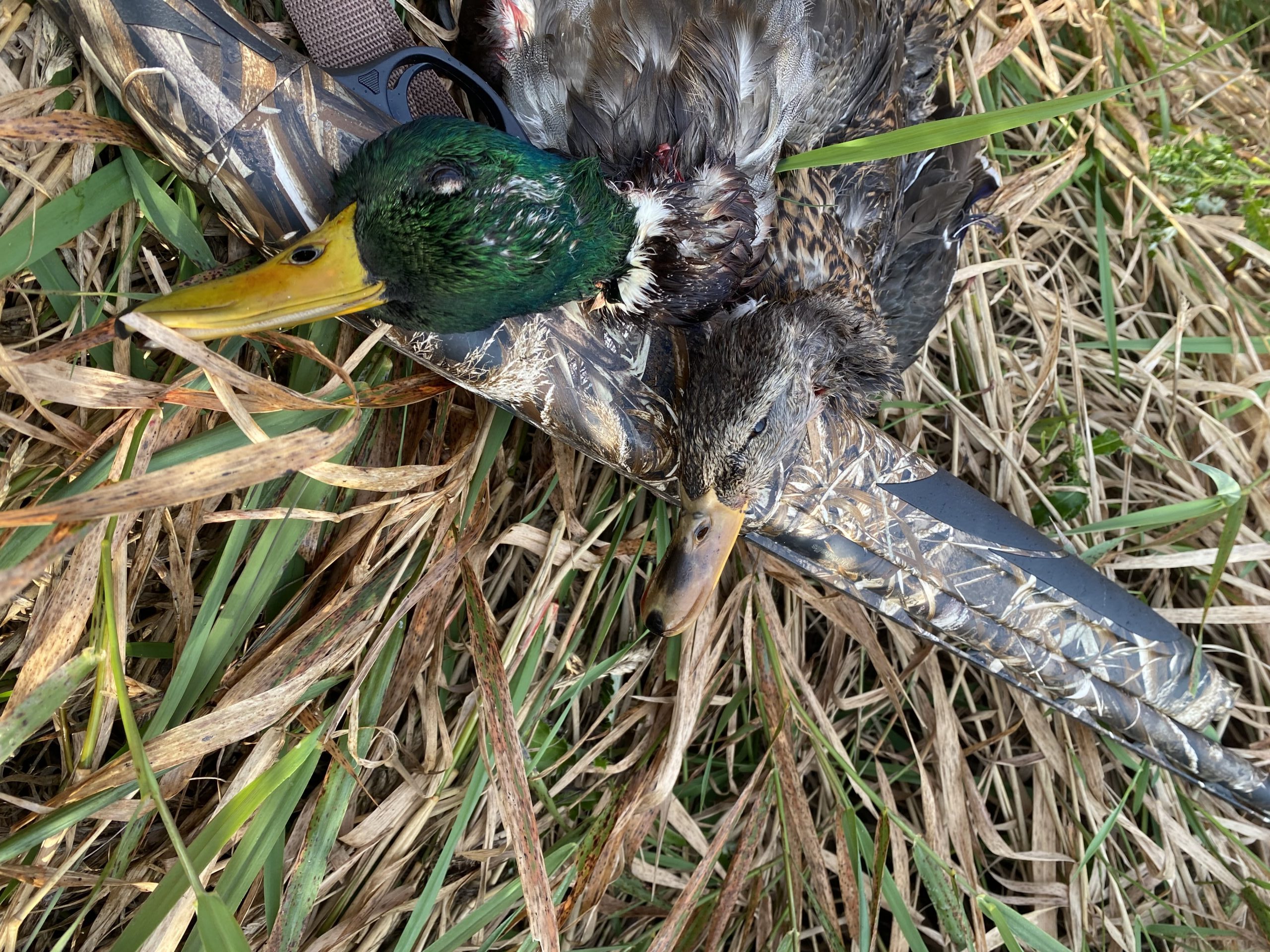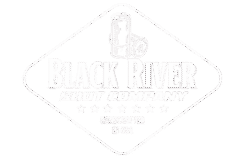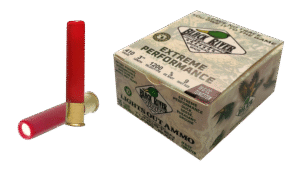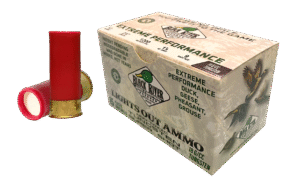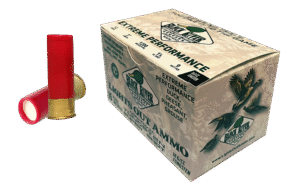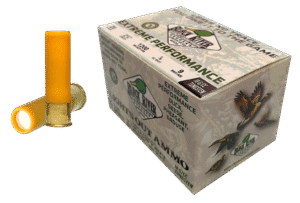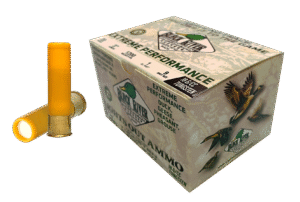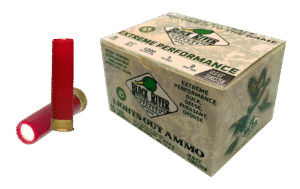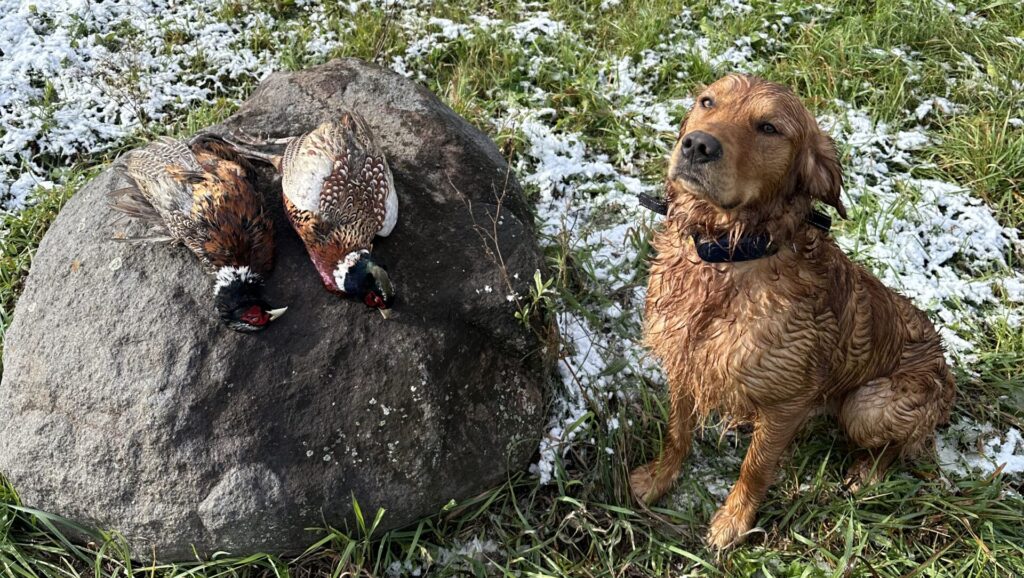
Shotguns are at the heart of American hunting. Whether it’s flushing pheasants in the uplands, calling in spring gobblers, or setting decoys for a late-season goose hunt, scatterguns connect hunters to some of the richest traditions in the field. With every pull of the trigger, though, a piece of gear most hunters rarely think about is left behind: the wad.
For decades, wads have been made of plastic. They separate the shot from the powder, cushion the payload, and ensure a consistent pattern. Performance-wise, they’ve been reliable. Environmentally? Not so much.
Once expelled, plastic wads litter fields, forests, and wetlands. Unlike the biodegradable remnants of game or natural vegetation, plastic doesn’t just vanish. It lingers for years — even decades — breaking down into microplastics that can affect soil, waterways, and wildlife across all types of hunting grounds.
Hunters have always been conservationists first. We buy licenses and stamps, fund habitat programs, and pass on traditions with an emphasis on respect for the resource. Biodegradable wads are the next step in that legacy — gear that performs in the field but also aligns with our responsibility as stewards of the land. In this post, we’ll explore the problem with plastic, how biodegradable wads solve it, and why they’re becoming essential for the future of hunting with shotguns.
The Problem with Plastic Wads
Every shotgun shell you’ve ever fired contained a wad — the component that separates the powder from the shot, cushions the pellets as they accelerate, and helps keep your pattern tight as it leaves the barrel. For decades, wads have been made of plastic, and for a long time most hunters never gave them a second thought. After all, they do their job well in terms of performance.
The problem comes after the shot leaves the barrel. Unlike lead shot, which was banned for waterfowl hunting back in 1991 due to poisoning concerns, plastic wads don’t degrade in any meaningful timeframe. Instead, they scatter across fields, marshes, and woods, where they can remain for decades. Over time, those wads break down into microplastics that can wash into waterways, enter the food chain, and harm the very wildlife and habitats hunters care about.
For waterfowlers, that often means wads collecting in flooded timber, rice fields, or marsh grasses where ducks and geese feed and roost. In upland hunting, spent wads can litter prairies and crop fields, where farmers are increasingly concerned about plastic contamination in soil. Even turkey hunters in hardwood draws or pasture edges are realizing that those little plastic pieces don’t just disappear — they stick around, often for years, where livestock or wildlife can ingest them.
The result? A buildup of plastic pollution tied directly to our hunts. For a community that prides itself on conservation and respect for the land, this is a growing concern. Many hunters are now asking the same question: Is there a better way to hunt with shotguns without leaving plastic behind?
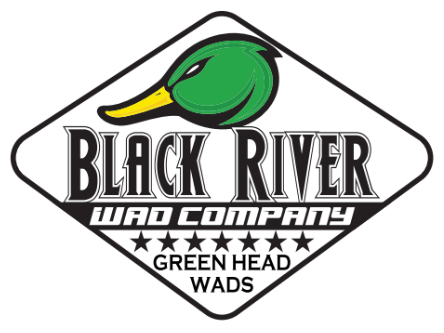
- Green Head Wad Shot Shells
Black River Wad Co .410 Gauge 3″, 5/8 oz – (1200 FPS) TSS #9 (15-Pack)
Original price was: $69.99.$59.99Current price is: $59.99. - Green Head Wad Shot Shells
Black River Wad Co 12 Gauge 2¾″, 1 oz – (1200 FPS) TSS #9 (15-Pack)
Original price was: $89.99.$79.99Current price is: $79.99. - Green Head Wad Shot Shells
Black River Wad Co 12 Gauge 3″, 1⅛ oz – (1200 FPS) TSS #9 (15-Pack)
Original price was: $99.99.$89.99Current price is: $89.99. - Green Head Wad Shot Shells
Black River Wad Co 20 Gauge 2¾″, ⅞ oz – (1200 FPS) TSS #9 (15-Pack)
Original price was: $79.99.$69.99Current price is: $69.99. - Green Head Wad Shot Shells
Black River Wad Co 20 Gauge 3″, 1 oz – (1200 FPS) TSS #9 (15-Pack)
Original price was: $89.99.$79.99Current price is: $79.99. - Green Head Wad Shot Shells
Black River Wad Co 28 Gauge 2¾″, ¾ oz – (1200 FPS) TSS #9 (15-Pack)
Original price was: $79.99.$69.99Current price is: $69.99.
Enter Biodegradable Wads
The answer to the plastic problem isn’t to give up shotguns — it’s to improve the components that make them work. That’s where biodegradable wads come in. These wads are designed with the same purpose as their plastic predecessors — separating the powder from the shot, cushioning the payload, and delivering consistent patterns — but with one critical difference: they break down naturally once they hit the ground.
Instead of petroleum-based plastics that linger for decades, biodegradable wads are typically made from plant-based polymers or other eco-friendly compounds. These materials are engineered to begin degrading when exposed to soil, moisture, and microbes in the environment. In other words, the wad that lands in a rice field, a patch of prairie grass, or the edge of a pasture will eventually return to the earth, leaving no long-term trace of your shot.
Performance is always the first question hunters ask — and rightly so. After all, nobody wants to sacrifice clean kills for the sake of going green. The good news is today’s biodegradable wads are built to match or even exceed the ballistic performance of traditional plastic. They deliver the same shot velocity, cushion, and pattern control you expect, ensuring upland birds fold clean, turkeys drop stone-dead, and ducks crumple over the decoys.
Equally important is peace of mind. Hunters no longer have to look down at fields, woods, or marsh edges and see bits of plastic scattered like litter. Instead, biodegradable wads let you walk away from every hunt knowing your presence won’t leave a permanent mark.
For many, this shift represents more than a gear upgrade — it’s a continuation of hunting’s oldest principle: take only what you need, leave the rest as you found it.
Benefits Beyond the Environment
It’s natural to wonder if a product designed to break down in the soil could possibly hold up to the demands of the field. But the truth is, modern biodegradable wads are engineered not only to match plastic performance, but in many cases to improve consistency and reliability.
Reliable Ballistics
Biodegradable wads are manufactured to the same strict tolerances as plastic. They maintain proper separation between powder and shot, cushion the pellets on ignition, and keep patterns tight downrange. Whether you’re chasing roosters in waist-high grass, calling in a longbeard at 40 yards, or shooting geese over cut corn, these wads ensure your payload flies true.
Peace of Mind in the Field
The benefit goes beyond what happens in the barrel. Hunters know they won’t leave behind plastic litter in a marsh, field, or woodlot. That peace of mind carries weight — especially for those who introduce kids or new hunters to the sport. Teaching stewardship is easier when your gear reflects the values you preach.
A Positive Public Image
Hunters are under more scrutiny than ever from non-hunting audiences. Choosing biodegradable wads is an easy, visible way to demonstrate that our community cares about the land and wildlife. It shows that conservation isn’t just talk — it’s baked into the gear we use.
In short, biodegradable wads offer a win-win: reliable performance for the hunter and a cleaner future for the land we hunt.
Upgrade Your Hunt with Tungsten Loads
Don’t settle for less stopping power. Shop our premium tungsten shells and make every shot count.
Shop Tungsten LoadsBlack River’s Green Head Wads
At Black River Shot Company, we’ve built our reputation on two commitments: deliver uncompromising performance in the field and honor the resource by hunting responsibly. Our Green Head Wads are the embodiment of that mission.
Designed for Hunters, by Hunters
We know the realities of the hunt because we live them. Our engineers and field testers worked side by side to develop a wad that performs under the toughest conditions — whether you’re crouched in a layout blind on a frozen cornfield, following bird dogs across rolling prairie, or set up against an oak for a spring gobbler. Green Head Wads were designed not just to be eco-friendly, but to be deadly effective.
Performance That Matches Premium Loads
A wad is only as good as the pattern it delivers, and we refused to compromise. Green Head Wads provide the same shot protection, pellet cushioning, and pattern uniformity that hunters expect from a modern shotshell. When paired with our tungsten loads, the result is a combination of hard-hitting density and environmentally responsible components. You get the range, penetration, and clean kills you demand — without leaving plastic behind.
Built for the Future of Hunting
Conservation isn’t just about funding habitat or planting food plots; it’s about the small choices hunters make every day. By choosing biodegradable wads, Black River hunters are proving that tradition and progress can work together. Each shot you take with a Green Head Wad is one more step toward keeping fields, marshes, and woods free of plastic waste.
We’re proud to be among the first companies pushing this movement forward. For us, it’s not a gimmick — it’s a responsibility. And it’s one that makes every shot fired with a Black River shell something you can feel good about, long after the hunt is over.
👉 Shop Green Head Wads and join the future of responsible hunting.
The Future of Responsible Hunting
Hunting has always evolved. From the transition away from lead shot in the early 1990s to the rise of tungsten as a premium alternative to steel, hunters have consistently adapted to new technology when it meant protecting the resource while improving performance. Biodegradable wads are simply the next chapter in that story.
Across the country, landowners, farmers, and conservation agencies are taking a closer look at plastic litter on fields and wetlands. It’s not hard to imagine a time when regulations may require biodegradable wads the same way non-toxic shot became mandatory for waterfowl. Hunters who adopt these wads now aren’t just ahead of the curve — they’re showing that our community is capable of self-regulation and responsibility before mandates are even in place.
There’s also the cultural side of the conversation. As non-hunters and younger generations learn about the sport, the image we project matters. Choosing gear that reduces waste and aligns with conservation values makes hunting easier to defend in the public eye. It reinforces what we already know: hunters are among the strongest advocates for wildlife and habitat.
The future of hunting doesn’t have to mean leaving tradition behind. It means carrying tradition forward with tools that reflect the values of stewardship, responsibility, and respect for the land. Biodegradable wads are a simple change with a big impact — and they prove that performance and conservation can go hand in hand.
Conclusion
Every hunter knows that the gear we choose tells a story. Our shotguns, shells, and strategies all say something about the kind of sportsmen and women we are. For decades, plastic wads were simply part of the deal — a hidden byproduct of each shot fired. Today, hunters have a choice: keep leaving behind plastic that will sit for years, or switch to biodegradable wads that deliver the same performance without the lasting footprint.
The case for biodegradable wads goes far beyond the environment. They perform reliably across all forms of shotgun hunting — from pheasants and grouse to turkeys and waterfowl. They represent a continuation of the values hunters already hold: clean kills, respect for wildlife, and stewardship of the land. And they show the next generation of hunters, as well as the non-hunting public, that we’re willing to adapt when it means protecting the resource.
At Black River Shot Company, we believe the future of hunting is built on both tradition and innovation. That’s why we created Green Head Wads — to give hunters the confidence to shoot hard-hitting loads while honoring the places we love to hunt.
👉 Ready to make the switch? Shop Green Head Wads and hunt with confidence — and conscience.
